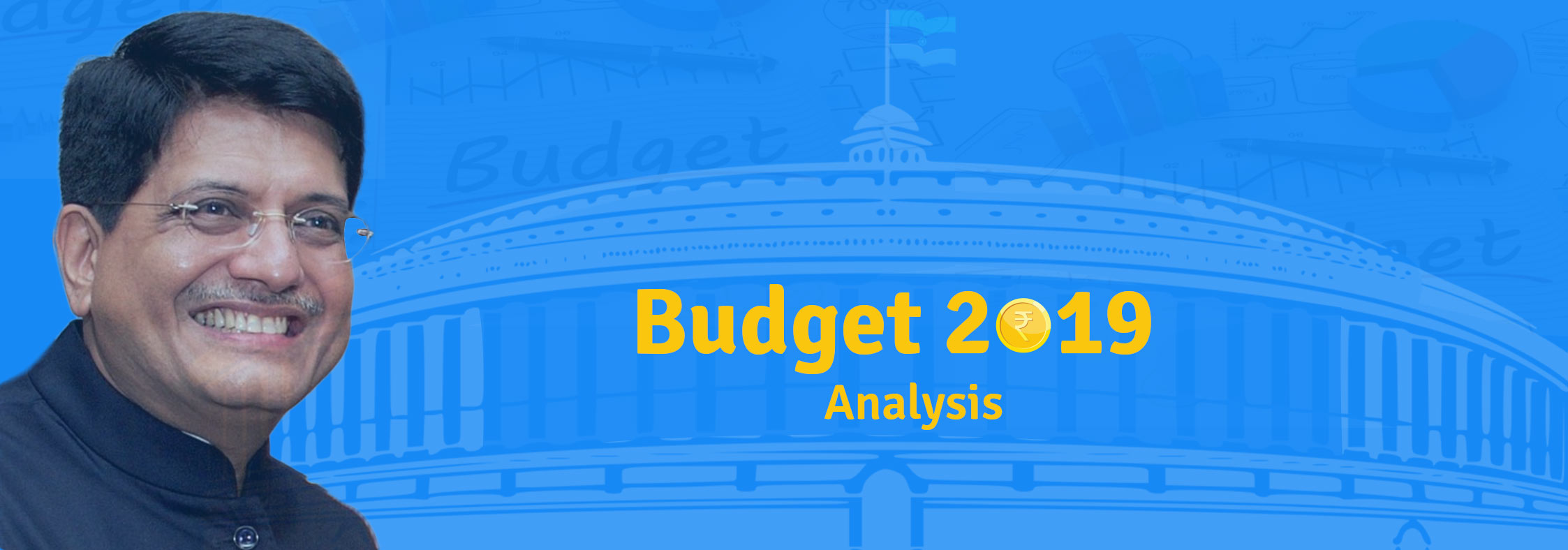Ashish Agrawal Founder,
India Business Analysis | IIT Roorkee, IIM-C alumnus
The Union Budget presented yesterday was keenly watched to find out if the government sticks to the path of fiscal prudence, or makes populist announcements. The speech, while making some important and pathbreaking announcements, thankfully, did not go overboard with its proposals. It has recommended a total expenditure of INR 27.8 lakh crore during 2019–20, an increase of more than 13.3% over revised estimates of INR 24.6 lakh crore in 2018–19.
The three most important proposals of this year’s budget are introduction of minimum income support to small/marginal farmers, introduction of pension scheme for unorganized sector employees, and introduction of the concept of “rural industrialization”.
Here are the details on these, and other budget proposals.
The budget this year generated a lot of interest on whether it would be a full budget or an ‘interim” one. “Interim”, or “vote on account”, means the government is not seeking funds from the Parliament to meet its full year’s expenditure but only for four months. The full budget will be presented after the new government is formed at the center.
In a first initiative of its kind, the government has proposed to provide an income support of INR 6,000 per person to all small and marginal farmers. The move will cost about INR 72,000 crore annually, as the estimated number of such farmers is about 12 crore. While the political angle of the move is debatable, the scheme would go a long way in helping these farmers meet their basic needs. Further, this should also act as an opportunity to look at the efficacy of another similar mega scheme, MGNREGA, and tweak it to make it more productive.
The pension scheme is largely similar to the one existing for the organized sector employees; and proposes a monthly pension of INR 3,000 to workers in the unorganized sector on attaining the age of 60. However, it will be applicable only for those earning up to INR 15,000 per month. The scheme is not free, but based on contribution by the worker concerned to the tune of INR 100 per month (if his age at the time of joining the scheme is 29 years) and INR 55 (if the age is 18 years). The Government will contribute an equal amount to the scheme; and the total sum involved could be about INR 15,000 crore.
It is expected that about one-fourth of the 43 crore workers engaged in the unorganized sector will enroll for the scheme, which is certainly far-reaching, as it provides a much-needed safety net to these small-time workers. It may be further tweaked to provide an option to the workers to deposit amounts in excess of the minimum for additional benefits (like those available in the current PF scheme), loan against these deposits, lumpsum payment in case of untimely death of the worker, and so on.
The budget speech talks about 10 dimensions, which would propel India’s growth over the next decade to help it become a $10 trillion economy. The most important of these is introduction of the concept of “rural industrialization”, which would not only help generate employment and provide a fillip to the rural economy but also prevent the exodus of population to urban centers. MSME industries at the grassroot level, comprising agro-processing, other village specific industries, etc., are critical to meet the basic level of rural income and wean people away from agriculture. Public sector enterprises, which helped India develop competency in heavy industries can act as engines of growth here too. The initiative can be clubbed with rural digitalization initiatives to help rural India emerge also as digital service providers. However, it is just a concept at the moment; and will need a focused strategy so that it does not get lost like the concept of ‘smart cities’.
An important element of budget announcements used to be changes in the indirect tax rates. GST seems to have taken away the charm from budget speeches, where consumers and corporate alike watched keenly to know these changes, and whether the stock market would react to likely winners and losers!
However, some changes in direct tax regime were brought in this year, the most important one being rebate to taxpayers with income up to INR 5 lakh (from the earlier INR 2.5 lakh). Since, this is a tax rebate, and not a change in the tax slab, tax payers with income over INR 5 lakh get no direct relief.
Among other segmental initiatives is the provision of 2% interest rebate on loan of up to INR 1 crore to SME units, which are GST registered. The measure is a smart one, as it not only provides an incentive to the segment, but also pushes them to register and enter the formal economy.





















































